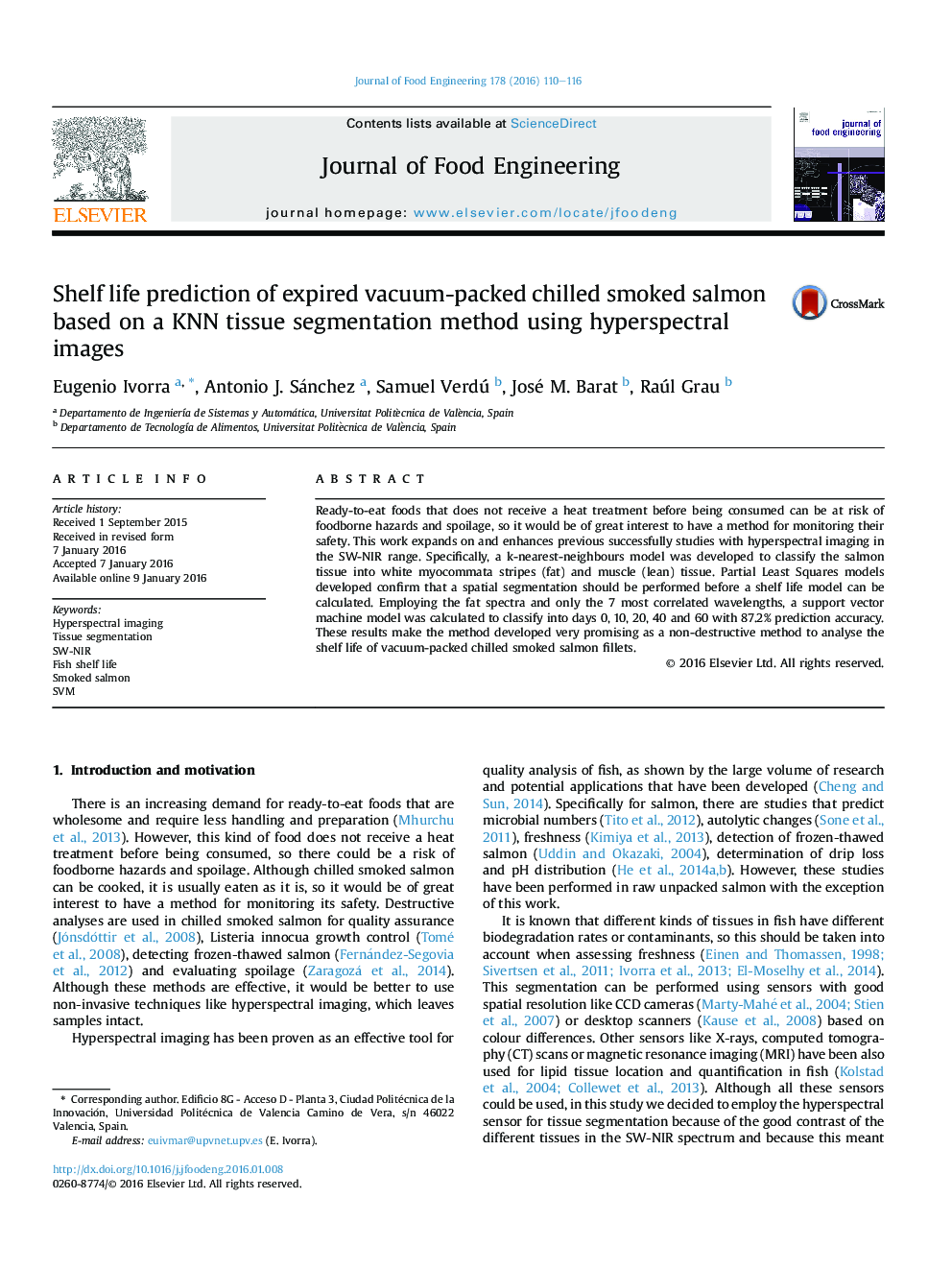| Article ID | Journal | Published Year | Pages | File Type |
|---|---|---|---|---|
| 222687 | Journal of Food Engineering | 2016 | 7 Pages |
•Hyperspectral information in the range of SW-NIR was used to assess salmon shelf life.•Packed salmon samples were analysed without manipulation.•Segmentation of fish tissues (lean and fat) using Knn model.•iPLS selected the 7 most correlated wavelengths (visible and NIR) with shelf life.
Ready-to-eat foods that does not receive a heat treatment before being consumed can be at risk of foodborne hazards and spoilage, so it would be of great interest to have a method for monitoring their safety. This work expands on and enhances previous successfully studies with hyperspectral imaging in the SW-NIR range. Specifically, a k-nearest-neighbours model was developed to classify the salmon tissue into white myocommata stripes (fat) and muscle (lean) tissue. Partial Least Squares models developed confirm that a spatial segmentation should be performed before a shelf life model can be calculated. Employing the fat spectra and only the 7 most correlated wavelengths, a support vector machine model was calculated to classify into days 0, 10, 20, 40 and 60 with 87.2% prediction accuracy. These results make the method developed very promising as a non-destructive method to analyse the shelf life of vacuum-packed chilled smoked salmon fillets.
